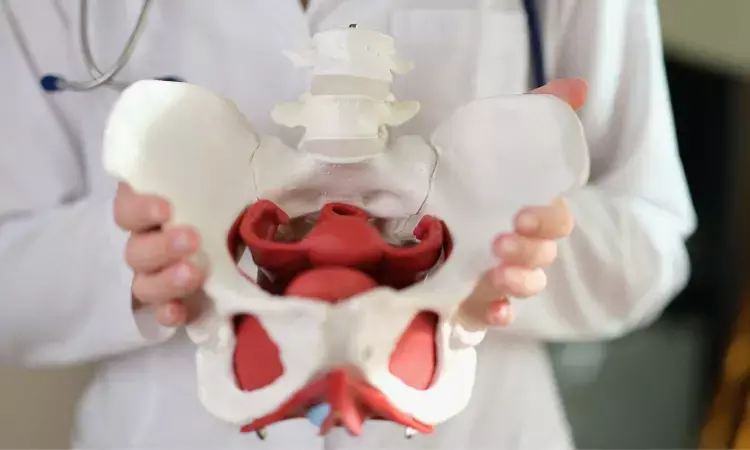- Home
- Medical news & Guidelines
- Anesthesiology
- Cardiology and CTVS
- Critical Care
- Dentistry
- Dermatology
- Diabetes and Endocrinology
- ENT
- Gastroenterology
- Medicine
- Nephrology
- Neurology
- Obstretics-Gynaecology
- Oncology
- Ophthalmology
- Orthopaedics
- Pediatrics-Neonatology
- Psychiatry
- Pulmonology
- Radiology
- Surgery
- Urology
- Laboratory Medicine
- Diet
- Nursing
- Paramedical
- Physiotherapy
- Health news
- Fact Check
- Bone Health Fact Check
- Brain Health Fact Check
- Cancer Related Fact Check
- Child Care Fact Check
- Dental and oral health fact check
- Diabetes and metabolic health fact check
- Diet and Nutrition Fact Check
- Eye and ENT Care Fact Check
- Fitness fact check
- Gut health fact check
- Heart health fact check
- Kidney health fact check
- Medical education fact check
- Men's health fact check
- Respiratory fact check
- Skin and hair care fact check
- Vaccine and Immunization fact check
- Women's health fact check
- AYUSH
- State News
- Andaman and Nicobar Islands
- Andhra Pradesh
- Arunachal Pradesh
- Assam
- Bihar
- Chandigarh
- Chattisgarh
- Dadra and Nagar Haveli
- Daman and Diu
- Delhi
- Goa
- Gujarat
- Haryana
- Himachal Pradesh
- Jammu & Kashmir
- Jharkhand
- Karnataka
- Kerala
- Ladakh
- Lakshadweep
- Madhya Pradesh
- Maharashtra
- Manipur
- Meghalaya
- Mizoram
- Nagaland
- Odisha
- Puducherry
- Punjab
- Rajasthan
- Sikkim
- Tamil Nadu
- Telangana
- Tripura
- Uttar Pradesh
- Uttrakhand
- West Bengal
- Medical Education
- Industry
Hip replacement performed with cementless prosthesis for femoral neck fracture tied to higher fracture risk

Various femoral neck fracture treatments range from nonoperative management to total hip replacement. When hip replacement is the best treatment option, it can be performed with or without bone cement to secure the prosthesis.
Researchers at Hospital for Special Surgery (HSS) and other centers have found total hip replacement performed with a cementless prosthesis for a femoral neck fracture led to a higher rate of a second fracture and subsequent revision surgery.
The research was presented today at the American Academy of Orthopaedic Surgeons (AAOS) Annual Meeting in Las Vegas. The results were also published online in The Journal of Arthroplasty.
“Femoral neck fractures are very common in the elderly and are a major cause of morbidity and mortality in this population,” explained Alexander McLawhorn, MD, a hip and knee orthopedic surgeon at HSS and study author. “Several national registry studies have demonstrated a lower risk of overall revision surgery, and specifically revision for periprosthetic fracture, with cemented femoral fixation. Despite this overwhelming data, many patients in the United States receive cementless fixation, including patients who have sustained femoral neck fractures.”
“To our knowledge, this was the first non-registry study comparing outcomes of cemented versus cementless total hip replacement for acute femoral neck fractures examining the influence of various patient factors, including bone quality,” explained Michael Kheir, MD, who presented the study at the AAOS meeting and played a leading role in the research during his fellowship at HSS. “The primary purpose was to compare complication rates between both groups, including periprosthetic fractures, aseptic revision, dislocation and mortality rates.” Dr. Kheir is currently an orthopedic surgeon specializing in hip and knee replacement at the University of Michigan.
The retrospective study analyzed 709 total hip replacement cases (199 cemented, 510 cementless) for femoral neck fractures from 2006 to 2020 at three large academic institutions: Hospital for Special Surgery, Indiana University Health and University Hospitals Cleveland Medical Center. Patient demographics, perioperative characteristics and x-rays were reviewed. The Dorr classification system, widely used to evaluate femoral bone quality, categorized patients with Dorr type A, B or C, with type C indicating the weakest bone.
The average age of study participants was 71 years; 66.9% of patients were women. The prevalence of Dorr type bone was 21.1% type A; 66.3% type B; and 12.6% type C. Patients receiving cemented implants were older, had a lower BMI, were more often women and were more likely to have a pre-existing diagnosis of osteoporosis and Dorr C bone type.
Cementless implant stems had a higher all-cause aseptic femoral revision rate (5.1 versus 0.5%,) and periprosthetic femoral fracture rate (4.3 versus 0%). Bone classification played a major role: Each successive Dorr grade had a higher fracture rate with cementless implants (Dorr A =2.3%; Dorr B = 3.7%; Dorr C = 15.9%). There was no difference in rates of dislocation, revision due to infection or mortality rate between groups. The study found an equal distribution of male and female patients who sustained a fracture.
“While femoral fractures occurred in patients with all types of bone quality, Dorr C bone was particularly prone, with an alarmingly high fracture rate when using cementless stems,” Dr. Kheir noted. “All of the fractures requiring a revision surgery occurred in cementless cases, suggesting that cemented stems may minimize this complication, regardless of patient sex or Dorr classification.”
Reference:
Michael M. Kheir, Julian E. Dilley, Jacob Speybroeck, Emile-Victor Kuyl, George Ochenjele, Alexander S. McLawhorn, R. Michael Meneghini, Published:October 22, 2022 DOI:https://doi.org/10.1016/j.arth.2022.10.028
Dr Kamal Kant Kohli-MBBS, DTCD- a chest specialist with more than 30 years of practice and a flair for writing clinical articles, Dr Kamal Kant Kohli joined Medical Dialogues as a Chief Editor of Medical News. Besides writing articles, as an editor, he proofreads and verifies all the medical content published on Medical Dialogues including those coming from journals, studies,medical conferences,guidelines etc. Email: drkohli@medicaldialogues.in. Contact no. 011-43720751


